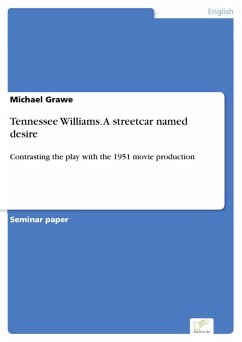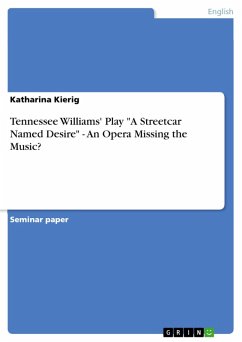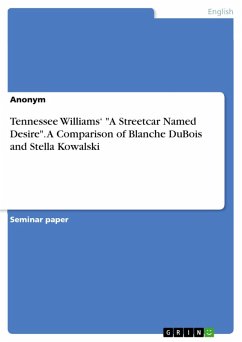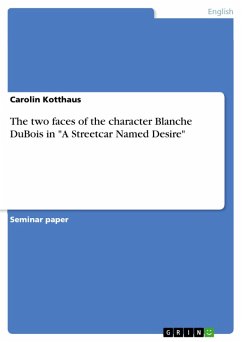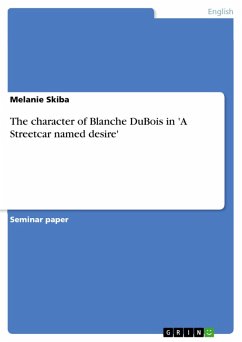Inhaltsangabe:Abstract: This paper will compare and contrast the written form of Tennessee Williams' play A Streetcar Named Desire with the 1951 movie version. It will explain and discuss the major differences between the two, focusing on the issue of censorship as it was an important factor in the development of the play from its Broadway form into a film. As this paper will show this was due to the fact that during the 1940s and 50s the world of theater in America was much more permissive than that of film. This paper will also examine Williams' concept of a 'plastic theater', an innovative approach by him which utilized music, sound effects, movement and lighting to express abstract themes. His idea of a 'plastic theater', was closer to the world of film than to the traditional form of the stage and is evident in A Streetcar Named Desire. It influenced the adaptation of the play to the big screen. The play A Streetcar Named Desire opened at the Ethel Barrymore Theater, New York City, on December 3, 1947. Following The Glass Menagerie it was only the second of Williams' plays to be performed on Broadway. Despite his relatively short history on the New York stage Streetcar was a great success, running for 855 performances. It also became the first play to win all three major awards: the Pulitzer Prize, the New York Drama Critics' Circle Award, and the Donaldson Award. Film makers were for two years uninterested in turning the play into a motion picture despite its overwhelming popularity. This was because A Streetcar Named Desire did not fit the standard Hollywood model for movies in the 1940s which was one of clean, wholesome family entertainment. Only William Wyler, one of Hollywood's most commercially successful directors at that time, was interested. He thought that it had the potential for box-office success, given both its popularity and its critical recognition. However, later he abandoned the project because of the censorship requirements. In 1951, the film A Streetcar Named Desire was released, directed by Elia Kazan. It had grown directly out of the New York stage production, which he had also directed. Tennessee Williams wrote the screenplay for the film together with Kazan, remaining close to the original text. Virtually the entire cast was retained for the movie, including leads Marlon Brando (as Stanley Kowalski), Kim Hunter (Stella Kowalski), and Karl Malden (Harold Mitchell or Mitch). However, as Blanche DuBois, Jessica Tandy [...]
Dieser Download kann aus rechtlichen Gründen nur mit Rechnungsadresse in A, B, BG, CY, CZ, D, DK, EW, E, FIN, F, GR, HR, H, IRL, I, LT, L, LR, M, NL, PL, P, R, S, SLO, SK ausgeliefert werden.

